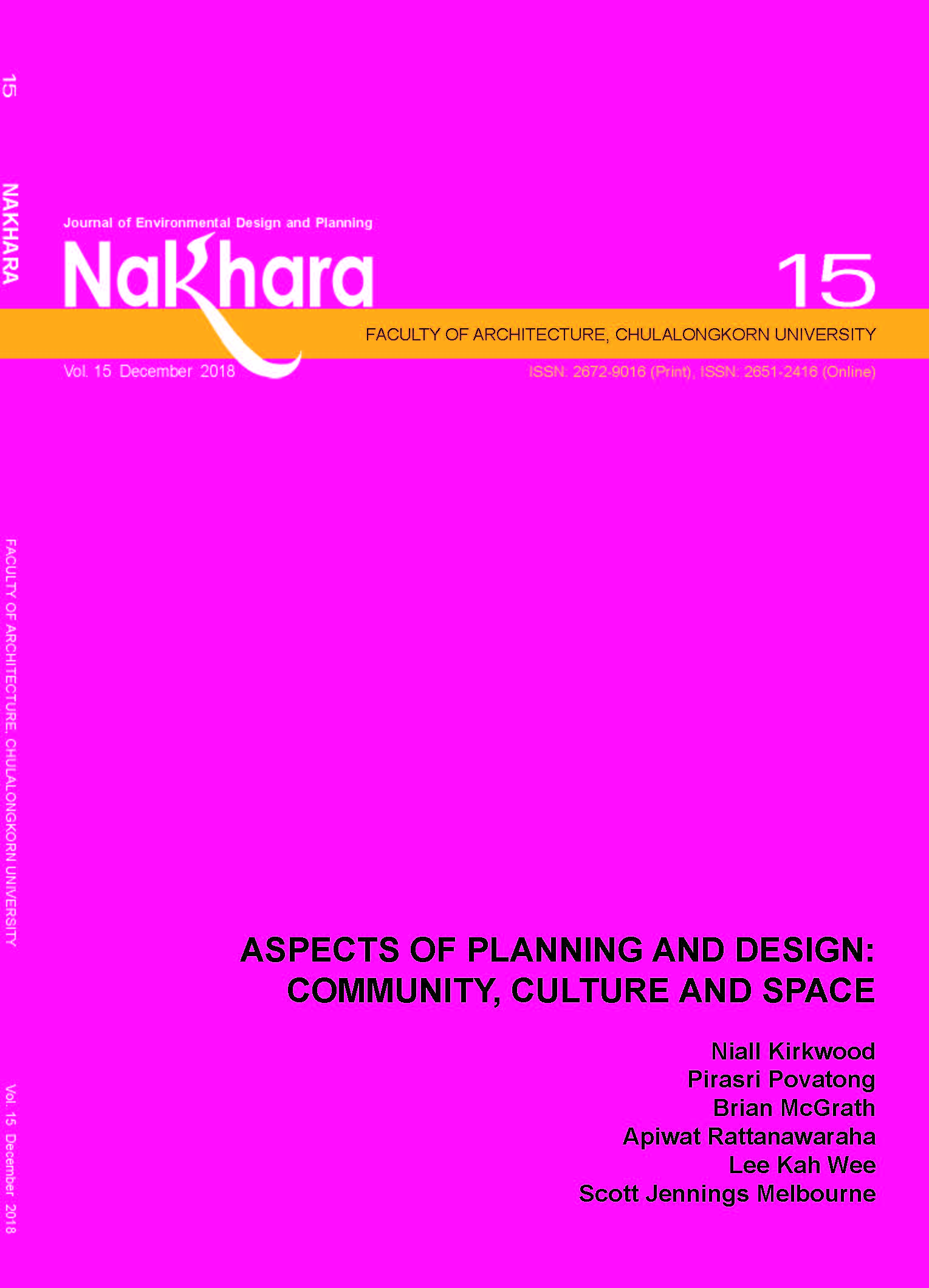Analysis of the Difference Between Two Approaches to Assessing Housing and Community Standards
Main Article Content
Abstract
This comparative study on housing and community comfortable living performance standards is a part of a participatory research conducted to meet the needs addressed by the Thai National Housing Authority to improve existing housing and community standards. The research team conducted a case study of the Rim Khwae Awm Community in Samut Songkhram Province. This community had been identified as a model of comfortable living. This article presents the results of an analysis of comfortable living standards derived from a review of related literature and standards derived from the participatory process with the community case study. This research found that the standards for comfortable living from the literature review gave priority to the physical aspect and factors which could be measured using scientific methods. By contrast, the community participatory standards gave priority to a holistic combination of the local ecology, environment, society, economy, and application of local wisdom.
Article Details

This work is licensed under a Creative Commons Attribution-NonCommercial-NoDerivatives 4.0 International License.
References
Chiravate, S.(2015). Maeklongian: Where are we going?, The Ordination Ceremony at Wat Pom Keaw. Samutsongkhram: n.p.
Chula Unisearch. (2009). Housing development plan and prevention plan / solution for slum area in fiscal year 2009: Lower Glamor Group 2, Samut Songkhram Province. Bangkok: Chulalongkorn University.
Department of Environmental Qualities Promotion. (2017). Sustainable urban environmental assessment guide book. Nakornpathom: Sun Packaging 2010 Limited.
Department of Families, Housing, Community Services and Indigenous Affairs (FaHCSIA). (2010). The national community housing standards manual (2nd ed). n.p.: The Queensland Department of Communities, Housing and Homelessness Services.
Jaruthat, T. (2007). Monitoring thegovernment’s low-income housing policy and plan. Bangkok: Departmentof Housing, Faculty of Architecture, Chulalongkorn University.
London Development Agency. (2010). London housing design guide ( Interim ed.). London: n.p.
National Housing Authority. (1986). Housing and environment standards. Bangkok: The National Housing Authority.
National Housing Authority. (1988). Housing and environment standards. Bangkok: The National Housing Authority.
Office of Natural Resources and Environmental Policy and Planning. (2005). Cultural environment traditional community conservation handbook, the project of development of quality standards of the cultural environment in old town neighbourhoods in the central and eastern regions. Bangkok: Property Print Limited.
Office of Natural Resources and Environmental Policy and Planning. (2005). The conservation of knowledge in development and old city management, volume 2: General concepts and criteria for conservation and restoration of the old town. Bangkok: Property Print Limited.
Panitchpakdi, K., Pimwern, T., & Laohpiyawisut, T.(2018). Development of housing and community comfortable living performance standards through participatory research. Bangkok: Faculty of Architecture, Chulalongkorn University.
The American Public Health Association. (2014). National healthy housing standard. Columbia, MD: National Center for Healthy Housing. Retrieved from https://nchh.org/tools-and-data/housing-code-tools/national-healthy-housing-standard/
U.S. Department of Housing and Urban Development. (2001). Housing choice: voucher program guidebook. Washington, D.C.: The Office.

